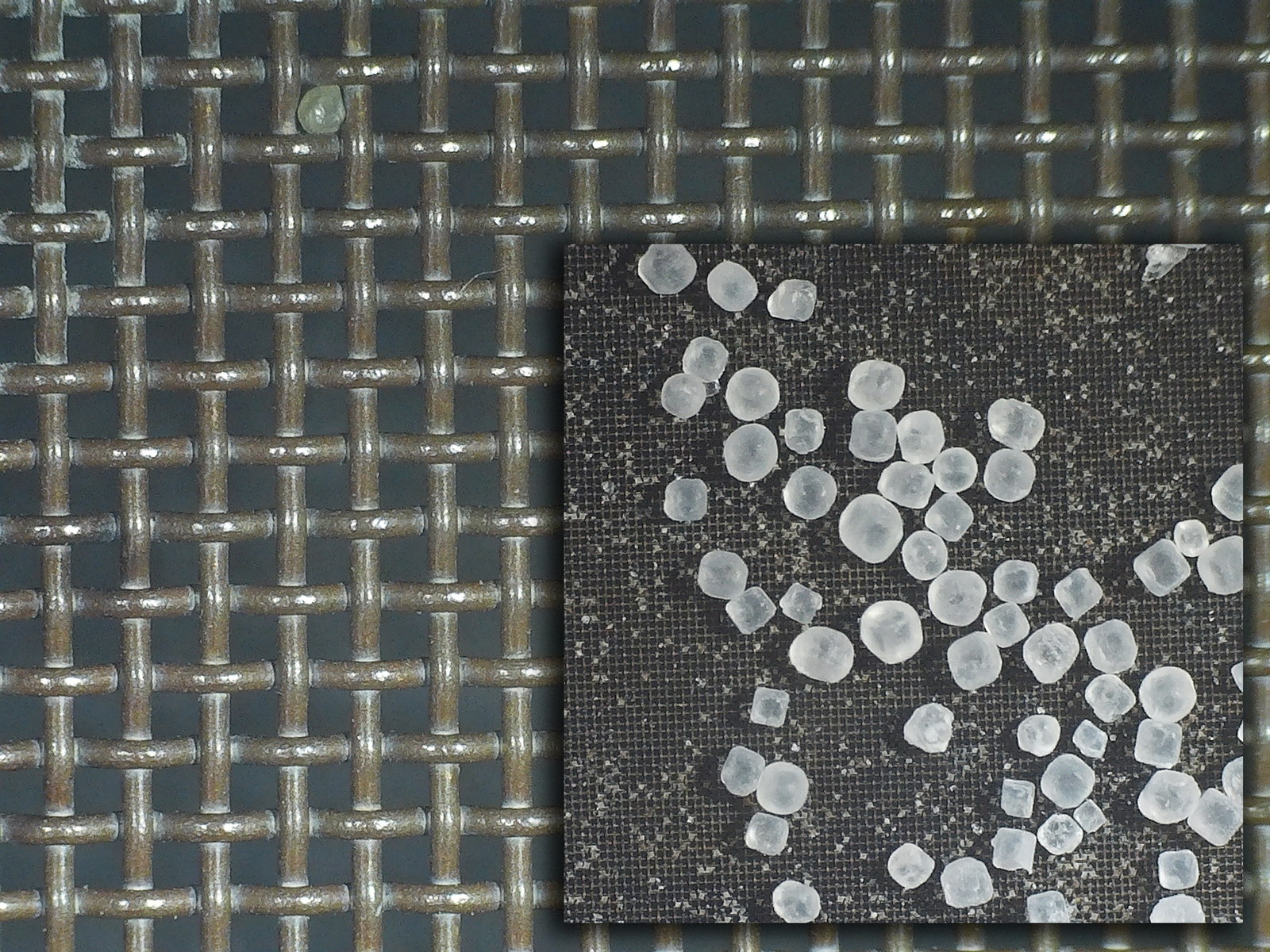| Monthly Tech-Tip | No tracking! No ads! | |
200 mesh
200 mesh (a sieve with 200 wires/inch) is the particle size that most minerals used in the ceramic industry are processed to.
Key phrases linking here: 200 mesh - Learn more
Details
In ceramics, this refers to the particle size of a powder. A 200 screen has 200 wires per inch. The openings between the wires measure 74 microns (the width of a typical human hair). While 40 mesh (an opening of 425 microns) is fine enough to remove organic material, rocks and coarse sand from a clay, a 200 sieve will remove all the sand and iron impurities (except for those producing the very tiniest of fired specks).
"200 mesh" is commonly employed as a label attached to air-separated mineral powders used in ceramics. Generally, it refers to the coarsest particles present, if the material is passed through a 200 mesh sieve only a small amount of residue should be present. Frits are generally 200 mesh.
200 mesh material is generally suitable for making fine stonewares and whitewares. But for white porcelains, finer materials are needed. 200 mesh silica may not be fine enough for glazes, especially low fire, since not all of the coarser particles will go into solution in the melt.
Related Information
The difference between Silica 90 and Silica 45 will affect the glaze melt

This picture has its own page with more detail, click here to see it.
Quartz particles have a high melting point, they must enter the glaze melt by being dissolved by it (usually the last particles to do so). Obviously, the silica should be as fine as possible to increase its surface area to be more readily dissolved. The more that dissolves the closer the physical properties of the fired glaze will be to the theoretical (e.g. degree of melting, thermal expansion, transparency, durability). This brand of silica, #90 classifies as 200 mesh even though 2.8% remains on the 200 mesh screen. Not surprisingly, their #45 grade retains 1.9% on the 325 mesh screen. However, the most significant aspect is how much of the #90 is on the 325 and 270 mesh screens: 26%. The #45 grade only retains 2.6% on them! This is a huge difference and shows the value of using the finer material. It would take a typical ball mill hours to make this difference.
We thought we were using 200 mesh silica until doing this test

This picture has its own page with more detail, click here to see it.
On the left is the oversize from 100 grams of 45 micron US Silica (325 mesh): 3 grams.
On the right is the oversize from 100 grams of their 95 micron grade (200 mesh): 26 grams!
Clearly, if you want minus 200 mesh material, the #45 325 mesh grade is the one to actually use.
How long do you need to ball mill a glaze?

This picture has its own page with more detail, click here to see it.
You can measure to see. How? Wash a measured amount through a 200 mesh screen and note the amount of residue. These two show the oversize on a 200 mesh screen of 100 grams of glaze slurry. On the left: Unmilled. On the right: Milled 1 hour. Clearly, it needs more than 1 hour in this mill. A factor here is the high percentage of silica in this recipe. And the fact that the coarser grade of US Silica #95 was used (rather than #45).
325 mesh

This picture has its own page with more detail, click here to see it.
A 325 screen has 325 wires-per-inch (the finer of the two screen closeups shown here). Those are grains of salt on it (45 micron openings, a typical human hair is 50-100 microns thick). A 40 mesh screen is much coarser, it has 425 micron openings (that is a particle of quartz trapped in an opening). A minus 45 mesh powder will be too fluffy to drop through a 325 screen. But particles smaller than 45 microns in a slurry will pass. To get a slurry through a screen this fine one needs to take special measures. It needs to have a high water content so it is fluid. Using a soft brush definitely helps. And a source of vibration. And it is necessary to clean the screen often to remove trapped oversize material. 325 mesh screen fabric is fragile and a sieve like this needs to be treated with care. Laboratory quality sieves cost hundreds of dollars (but can often be found used on ebay).
Links
| Glossary |
Sieve
Sieves are important in ceramics for removing particulates and agglomerates from glaze, engobe and body slurries. |
| Glossary |
325 mesh
325 mesh (a sieve with 325 wires/inch) is the finest particle size that most ceramic minerals can be practically processed to (premium grades). |
| By Tony Hansen Follow me on        |  |
Got a Question?
Buy me a coffee and we can talk

https://digitalfire.com, All Rights Reserved
Privacy Policy
